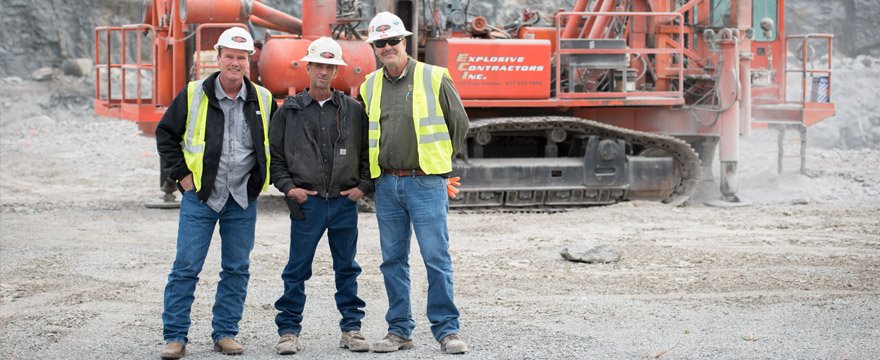Granite – From the Bottom of the Pit to America’s Rooftops
Harvey, Irma, Maria – familiar names to all of those who watched the news on the hurricanes wreaking havoc around the Gulf of Mexico in 2017. As unlikely as it may seem, they are part of the reason why the drillers in a granite quarry in Arkansas are quite busy these days.
“I was introduced to Robit’s CEO at the Conexpo trade show in Las Vegas. I had a really good first impression of him and we got along good. We were having excessive wear of bits, chucks and hammers at our Arkansas site because of the material we were drilling. Robit said they could help us with that, so I decided to give them a try. It turned out my drilling foreman George Aday had already tested Robit tools, but as he had been buying them through a distributor, he had found the prices too high. Sometime after Conexpo, I visited the new Robit factory in Sherman, Texas and placed a first order for DTH hammers and bits. At first, we had some bits that did not work so good, but Robit did some redesign based on our feedback. Ever since, their products have worked better than anything we have used before. I would say we are very happy with Robit products and service as well.”
Dane Braden
President, Explosive Contractors, Inc.
Asphalt shingle is the most popular roofing cover in the United States – it’s relatively easy to install and not very expensive. The base mat of the shingle is saturated with asphalt and the top surface is coated with mineral granules. These granules add durability and protect the asphalt from the deteriorating effects of ultra-violet radiation. They also give the shingles their colour.
However, when a hurricane strikes, no amount of granules will protect a roof unless it’s carefully stormproofed. Each year, thousands of roofs in the hurricaneprone areas in South-Eastern US are damaged, if not entirely ripped away, by storms. This has boosted the production of roofing shingles and, consequently, the demand for mineral granules in the area.
Small clouds of grey dust rise from the ground as Justin Brandt operates the drill in his orange-red rig in a granite quarry in central Arkansas. He drills 5.75“ (14.6 cm) holes that go 14–15 metres deep into the hard rock. Later, the holes will be loaded with explosives and detonated; the blasted rock will then undergo a two-stage process of crushing and grinding, finally resulting in granules about 2 mm in diameter – the perfect coating material for asphalt shingles.
The orange-red drill rig belongs to Explosive Contractors, Inc. (ECI). Besides Arkansas and their home state Missouri, ECI operates dozens of drilling and blasting jobsites in Kansas, Illinois, Wisconsin, and Oklahoma, employing a fifty-strong regular staff and a large number of subcontractors.
Rich in quartz and thus very hard and abrasive, the Arkansas granite is a true challenge for any rock tool. Drill bits and hammers tend to wear out quickly. “Every time we need to shut down the machine to change bits, we lose production”, says Dane Braden, President and owner of ECI.
Recent months have seen a remarkable increase in production at the Arkansas site: replacing their previous Down-the-Hole drill bits and hammers with Robit tools has really made a difference for ECI. This did not happen overnight though: it required some testing, analysis, and product improvement by Robit until the optimal set of tools was developed. Today, the hammers are drilling up to twice as far as the previous ones.
This sounds like good news for all the other granite quarries in the area as well.
From left: Owner of ECI Dane Braden, his Drilling Foreman George Aday and Safety Manager Sam Crutcher
